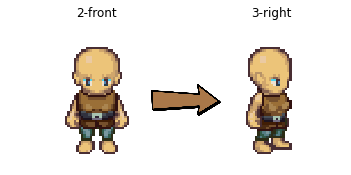def Generator():
inputs = tf.keras.layers.Input(shape=[64, 64, 4])
down_stack = [
downsample(64, 4, apply_batchnorm=False), # (batch_size, 32, 32, 64)
downsample(128, 4), # (batch_size, 16, 16, 128)
downsample(256, 4), # (batch_size, 8, 8, 256)
downsample(512, 4), # (batch_size, 4, 4, 512)
downsample(512, 4), # (batch_size, 2, 2, 512)
downsample(512, 4), # (batch_size, 1, 1, 512)
]
up_stack = [
upsample(512, 4, apply_dropout=True), # (batch_size, 2, 2, 1024)
upsample(512, 4, apply_dropout=True), # (batch_size, 4, 4, 1024)
upsample(512, 4, apply_dropout=True), # (batch_size, 8, 8, 1024)
upsample(512, 4), # (batch_size, 16, 16, 1024)
upsample(256, 4), # (batch_size, 32, 32, 512)
]
initializer = tf.random_normal_initializer(0., 0.02)
last = tf.keras.layers.Conv2DTranspose(OUTPUT_CHANNELS, 4,
strides=2,
padding="same",
kernel_initializer=initializer,
activation="tanh") # (batch_size, 64, 64, 4)
x = inputs
# downsampling e adicionando as skip-connections
skips = []
for down in down_stack:
x = down(x)
skips.append(x)
skips = reversed(skips[:-1])
# camadas de upsampling e skip connections
for up, skip in zip(up_stack, skips):
x = up(x)
x = tf.keras.layers.Concatenate()([x, skip])
x = last(x)
return tf.keras.Model(inputs=inputs, outputs=x)

